Pigs in Water: living underwater with Susan Williams
Bill Dennison · 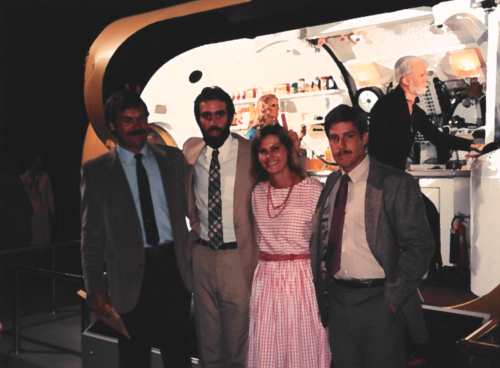
The year was 1984. Ronald Reagan was running for President against Walter Mondale. The Summer Olympics were held in Los Angeles. Michael Jackson’s Thriller album topped the charts and Ghostbusters was the summer blockbuster movie. The Space Shuttle Discovery made its maiden flight and the first Apple Macintosh computer went on sale. But what I most remember about the summer of 1984 was that I lived underwater with Susan Williams 60 feet below the surface of the Caribbean Sea.

My good friend and colleague Susan Williams (1951-2018) and I collaborated on a research project that provided us the opportunity to live for a week underwater in Salt River Canyon, St. Croix, U.S. Virgin Islands. The summer of 1984 was the last season for the underwater habitat called Hydrolab, which afterwards was decommissioned and replaced with Aquarius.

Susan had joined me in Woods Hole, where I was doing my dissertation research, to co-author our proposal. We had an interest in biological clocks. I have always been fascinated with circadian rhythms in plants, or internal clocks, that regulate their physiology. Susan had done her PhD research on a large macroalga Caulerpa and I was finishing my PhD on seagrasses. Both of these green underwater plants live side by side in soft sediments, and as Susan found in her thesis, they can both absorb nutrients in their below ground tissues (rhizoids in algae and roots in seagrasses). But in spite of similar appearances and life styles, they had very different evolutionary histories. Macroalga are primitive organisms, evolving in the sea, but seagrasses evolved from terrestrial plants that re-invaded the sea from their algal ancestors. So the question we were interested in was whether or not the internal clocks in these evolutionary divergent plants were influenced by their genetic histories or by their environmental surroundings. To test the internal clocks of the macroalga Caulerpa and the seagrass Halophila, we set up underwater lights - the ones used in swimming pools - and underwater shades to manipulate daily light periods. We learned that the seagrass had a more powerful clock than the macroalga and that the clock persisted even with continuous light or continuous darkness that we imposed on the plants.
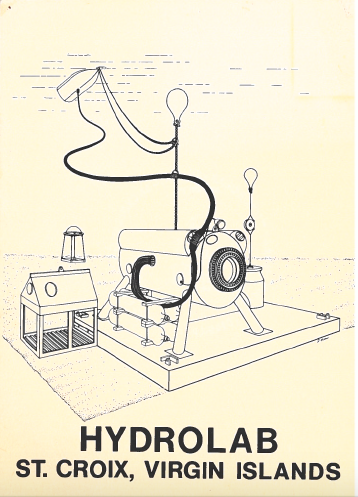
Susan and I chose our respective dive buddies. Susan chose her boyfriend (who became her husband), Bruce Nyden, and I chose my NOAA friend from Woods Hole Chuck Gross. Susan and Bruce were working for the NOAA National Undersea Research Program, based in St. Croix, so Chuck and I flew down there to join them.
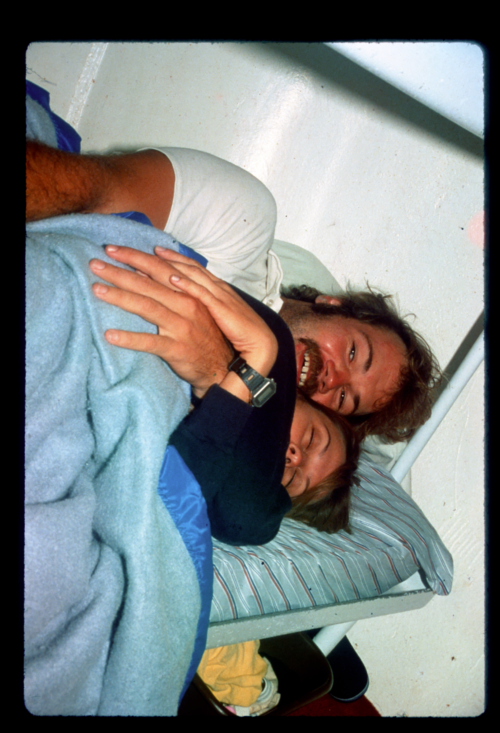
The night before our mission was to start, the Fairleigh Dickinson marine laboratory, headed by John Ogden, held a Fourth of July party, complete with an entire pig cooked in a pit in the sand. Since we were about to become aquanauts, we did not drink or stay late at the party. The next morning, we began our mission in Hydrolab. The meals for the aquanauts were prepared on shore and our support divers brought the meals to us in a pressurized container (they used paint pots which are pressurized for spray painting). The support divers had a curious smile when they showed up in the open trunk with the dinner pot. As we began the process of unlatching the multiple latches, we noticed the support divers had swum around to the viewing window and were watching us open the dinner pot. I will never forget this sight when we opened the pot: the head of a pig, complete with an apple in his mouth, staring up at us. The support divers laughed through their scuba regulators and we shook our fists at them. They soon retrieved the real dinner and we put the pig head outside the window. Since one of us was awake at all times on a watch system, we thought we would see big fish coming to eat the pig head. Even though a couple of small sharks cruised by, we were surprised to NOT see a feeding frenzy. But when morning broke and we went over to investigate, the pig head was reduced to a clean skull. Tiny fish and amphipods devoured the pig without us seeing them.
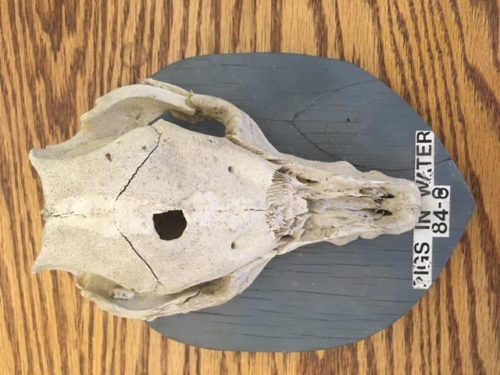
The Muppets had come out with a popular song “Pigs in Space!” which we adapted to “Pigs in Water!” I think that I need to point out that the effects of pressurized nitrogen (we were living at 3 atmospheres) led to “nitrogen narcosis.” We were fairly giddy the entire time we were saturated. Everything was pretty funny, and our Pigs in Water! was a rallying cry for us throughout our mission. When we eventually surfaced, Chuck took the pig skull and mounted it on a wooden plaque. Susan and I traded the skull back and forth, displaying it in our respective labs. I currently have the Pigs in Water plaque, and I am glad that I have this tangible reminder of my Hydrolab mission with Susan.
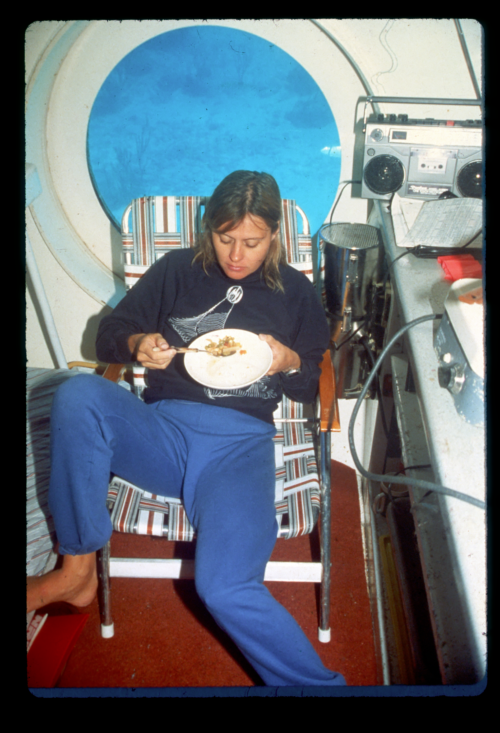
When Hydrolab was decommissioned, it was transported to the Smithsonian’s Natural History Museum in the National Mall. They cut it open to display the inside and held a big party, sponsored by Connecticut Senator Lowell Weicker. Jr. Susan and Bruce, who were at the party in their role as NOAA staff, wrangled tickets for me and for Chuck, so we were the only full aquanaut team there. We had a blast. It was nice to see our names displayed next to the habitat, but most of all, it was great to have the Pigs in Water reunited.
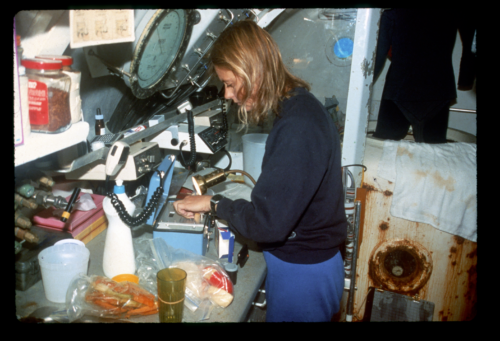
When I look back on my career and the people I encountered along the way, one of the absolute highlights was my Pigs in Water experience with Susan, Bruce and Chuck in the summer of 1984.
About the author
Bill Dennison

Dr. Bill Dennison is a Professor of Marine Science and Vice President for Science Application at the University of Maryland Center for Environmental Science.
Next Post > My four decade friendship with Susan Williams
Comments
-
Bill Dennison 7 years ago
Dear Holly,
I am so sorry for your loss. Susan was so special and we both were lucky to have her in our lives. I am planning on attending the California event in late October--hope to meet you in person. Note I posted another blog about Susan on May 3. Thanks for your comment. Yours, Bill Dennison -
Dr. Holly Williams 7 years ago
Thank you so very much. I am Susan's only sibling and you cannot imagine what this means to me and to my family. We miss her terribly!
Warmly,
Holly
-
Amanda Newsom 7 years ago
Thank you so much for sharing this story about your time with Susan. I was one of her recent(ish) doctoral students, and reading stories like these has been a great help in processing her loss both as a person and as a professional.
-
Henry Tonnemacher 4 years ago
Thank you for posting Bill! Today (Nov. 12, 2021) is the first time I have seen this post. It makes for an excellent flashback. I have fond memories of the Hydrolab, and Susan and Bruce as well, starting back in 1977 when I was the Diving Coordinator for Hydrolab and also the Diving Supervisor of West Indies Lab. Thanks for the memories!

